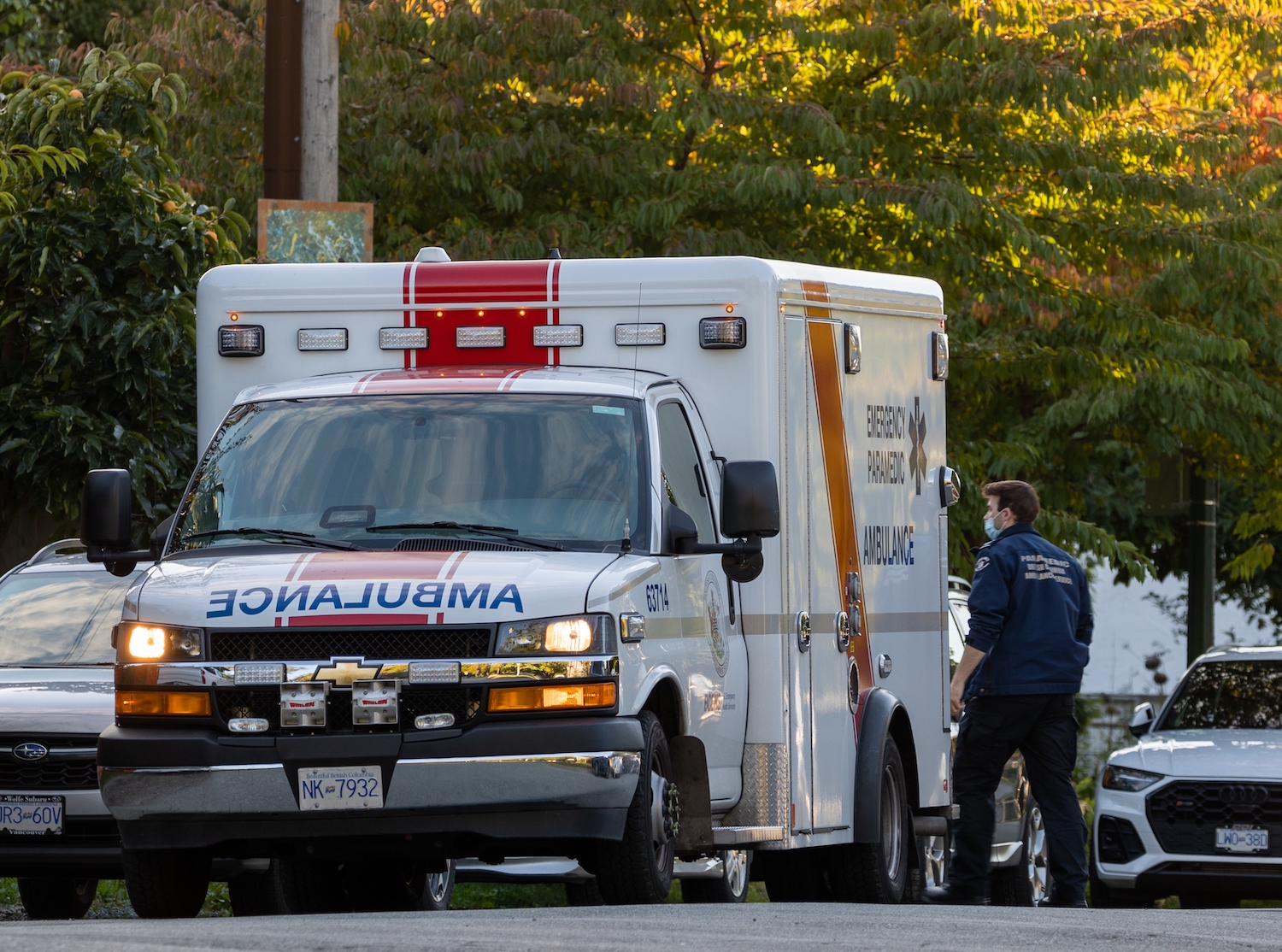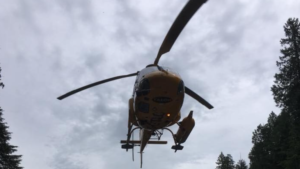BC ambulance paramedic. Photo: Shutterstock
Robyn Bell May 9, 2024
Benzos were linked to nearly 50% of all toxic drug deaths on the Island in 2023
The BC Coroners Service has released data on the number of toxic drug deaths in March, and the high number of overdoses in the province shows no signs of letting up. On the Island, there were 43 deaths, with 192 total for the province. This represents an 8% increase in deaths compared to the previous month.
In the first quarter of 2024, 128 Islanders and 572 people in BC died from toxic drugs.
While men make up the vast majority of deaths at 71%, there has been a recent rise in the number of women dying, the province said, from 20.6 deaths per 100K in all of 2023 to 23 deaths per 100K in 2024.
Paramedics see the effects of the crisis firsthand
The high rate of deaths has not gone unnoticed by those on the frontlines, particularly paramedics. Ian Tait, communications director for Ambulance Paramedics of BC (APBC), told Capital Daily overdose calls have become commonplace.
“Even with the numbers as bad as they are, we’re reviving, like 50, sometimes 100, to one death,” said Tait, explaining that the “vast majority” of people are revived on the scene.
“When we see that there’s only a couple thousand deaths per year, we’re like, ‘wow, there’s only that many,’ because we do 100 [overdose calls] sometimes a day.”
Brian Twaites, paramedic public information officer at BC Emergency Health Services (BCEHS) said paramedics are put under incredible pressure to revive people in the moment.
“These patients are literally minutes away from death,” Twaites said. “When you stop breathing from a narcotic overdose, it’s roughly four to six minutes until brain cells start to die. So paramedics and first responders need to work very quickly to oxygenate these patients.”
The typical approach to reversing an opioid overdose is to administer naloxone (known by its brand name Narcan). Naloxone can quickly block opioids, such as heroin, from receptors in the body that opioids bind to. But with a substance like fentanyl, a synthetic opioid 50 times stronger than heroin, or carfentanil, which is 100 times stronger than fentanyl, several doses of naloxone are needed to revive a patient—sometimes five to six doses more than normal, according to Twaites.
Benzodiazepines on the rise
But the drug supply doesn’t just contain opioids, and one class of drugs has become increasingly present in the unregulated market: benzodiazepines, or “benzos,” a class of drugs often prescribed for anxiety, such as Xanax, Ativan, and Valium.
Prior to 2020, benzos were linked to less than 10% of overdose deaths. Since then, that link has increased rapidly and is now tied to 42% of toxic drug deaths provincewide—and to nearly 50% of such deaths on the Island in 2023.
“The unregulated market continually changes,” said Bruce Wallace, lead researcher at Substance UVic and a social work professor at the school. “It’s hard to understand why or to predict.”
He said researchers began to notice benzos in the illicit opioid market in 2020 at the beginning of the pandemic. Since then, the majority of opioids tested by Substance UVic have included benzo, typically along with fentanyl.
Substance UVic sends out reports weekly to give people who use drugs—and those who care about them—a glimpse into the state of the unregulated supply, helping them to make informed choices about using.
However, frequent drug users are often not the ones experiencing overdoses, according to APBC’s Tait.
“People that are suffering from addictions, they usually know their levels really well,” he said. “We see a lot of people that have died that literally were trying something and they had no clue that there was something in their drugs.”
“None of this stuff is regulated properly, right? It’s all made in bathtubs, in giant vats.”
He said one reason benzos are crossing into the opioid supply is that those making the drugs aren’t cleaning out the containers they use when switching between different drugs, leaving trace amounts of benzos in the opioid mixture.
While this could be the case for some drugs on the market, it’s difficult to say with certainty how substances appear in the supply. It wasn’t that long ago that fentanyl was unheard of on the illicit market, but it’s now the most commonly linked substance to toxic drug deaths, found 85% of the time.
Of course, benzos aren’t the only substance appearing in these drug mixtures, known as “polypharm” by paramedics.
“Benzos are just one of 100 super suspicious, weird things that have been added to drugs over the years,” said Tait, explaining that it’s not uncommon to find detergents mixed into drugs.
“There’s just so many things when these are made in these shifty labs.”

Benzos complicate overdose treatments
The addition of benzos in the unregulated drug supply has complicated medical responses to overdoses since naloxone is not designed to work on this class of drugs. When experiencing an overdose on heroin, naloxone can completely restore breathing. However, people who have taken a mixture of opioids and benzos remain unconscious after several naloxone deployments, leading paramedics to maintain their airways longer than normal, according to Twaites.
Often these people will need to go to the hospital for longer treatment, though Twaites says everyone who has experienced an overdose should go to the ER in case the naloxone wears off before the drug. However, he and Tait agree that not everyone wants to go to the hospital, and many who have had their breathing restored choose not to.
Because of this, BCEHS has designed multiple pathways to ensure people are taken care of after an overdose, including a program where an outreach worker in the community contacts individuals to help them with substance abuse issues.
If you see someone in distress, lend a hand
Twaites says another important way of keeping people who use drugs safe is for community members to help out when someone appears to be overdosing.
“If you see someone that you think is unconscious or not breathing, they’re not responsive, we want you to go and check on them,” said Twaites. “Go phone 911 and at that same time, see if they’re awake. Because if they’re not you are the first step in that patient’s survivability.”
Twaites said emergency medical call takers will talk you through how to help the person until paramedics arrive. Capital Daily has also created a guide of what to do in case you see someone overdosing.





